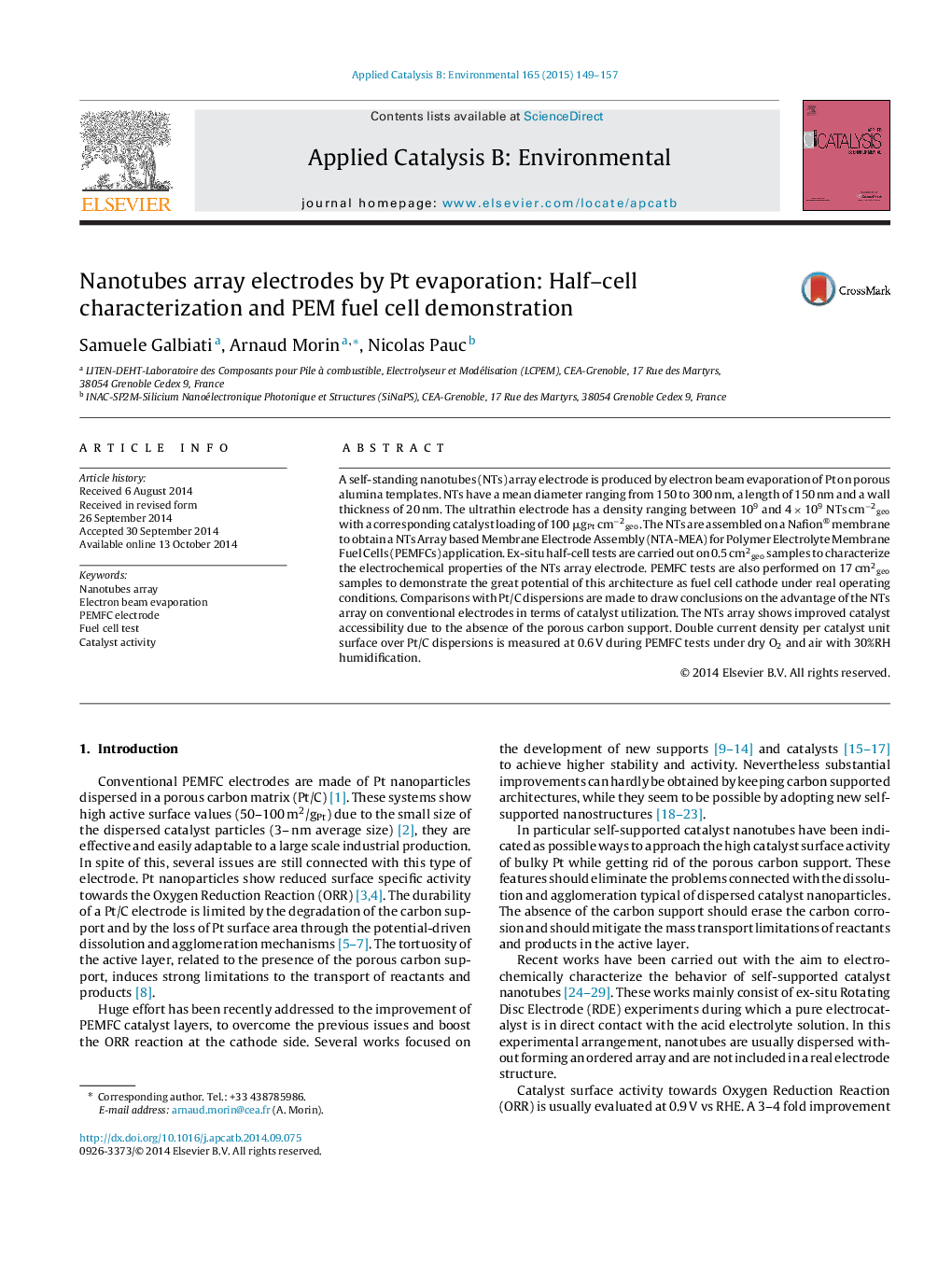| Article ID | Journal | Published Year | Pages | File Type |
|---|---|---|---|---|
| 45544 | Applied Catalysis B: Environmental | 2015 | 9 Pages |
•Facile fabrication of an ultrathin Pt nanotubes array electrode.•Test in half cell and fuel cell to catalyze oxygen reduction reaction.•Clarification of the real advantage of Pt nanotubes arrays in PEMFC catalysis.
A self-standing nanotubes (NTs) array electrode is produced by electron beam evaporation of Pt on porous alumina templates. NTs have a mean diameter ranging from 150 to 300 nm, a length of 150 nm and a wall thickness of 20 nm. The ultrathin electrode has a density ranging between 109 and 4 × 109 NTs cm−2geo with a corresponding catalyst loading of 100 μgPt cm−2geo. The NTs are assembled on a Nafion® membrane to obtain a NTs Array based Membrane Electrode Assembly (NTA-MEA) for Polymer Electrolyte Membrane Fuel Cells (PEMFCs) application. Ex-situ half-cell tests are carried out on 0.5 cm2geo samples to characterize the electrochemical properties of the NTs array electrode. PEMFC tests are also performed on 17 cm2geo samples to demonstrate the great potential of this architecture as fuel cell cathode under real operating conditions. Comparisons with Pt/C dispersions are made to draw conclusions on the advantage of the NTs array on conventional electrodes in terms of catalyst utilization. The NTs array shows improved catalyst accessibility due to the absence of the porous carbon support. Double current density per catalyst unit surface over Pt/C dispersions is measured at 0.6 V during PEMFC tests under dry O2 and air with 30%RH humidification.
Graphical abstractFigure optionsDownload full-size imageDownload as PowerPoint slide
